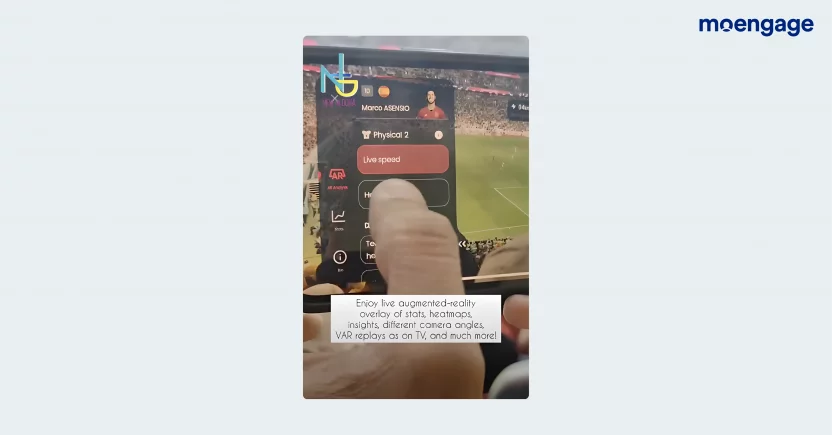FIFA in Numbers: Successful Brand Campaigns That Caught the Eye
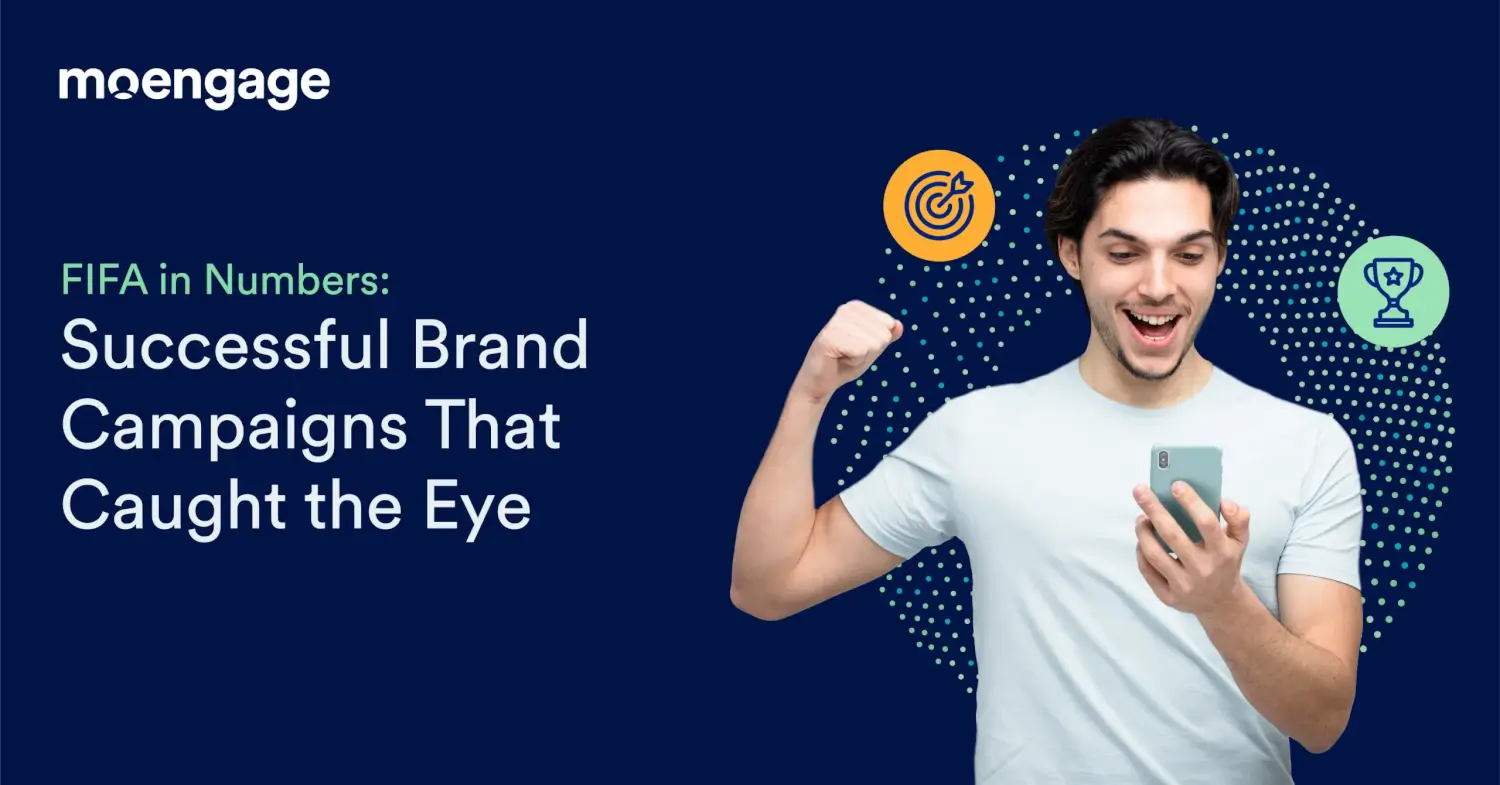
Reading Time: 7 minutes
It is only fair to say that the recent edition of the FIFA World Cup was a mixed bag of ground-breaking numbers, astounding upsets (in the game), and controversies.
Unlike any other mega sporting event, this World Cup had many defining moments that attracted viewers’ eyeballs. Be it the last world cup for a few prominent players (supposedly!) or some special antics by a famous chef post the final whistle of the tournament, the viewership surpassed 2.45 billion views in the group stages itself, and so did the number of fans physically present to watch the games.
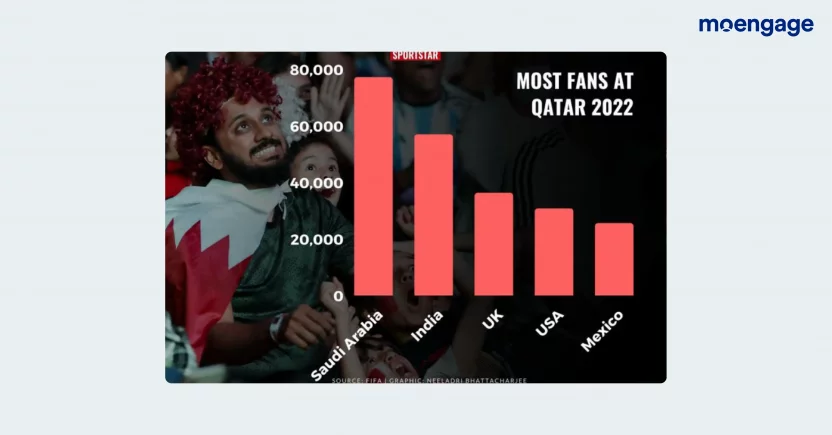
But that’s not all! There were some notable moments created as well. Saudi Arabia winning against Argentina, Morocco reaching the semi-finals, and of course, the G.O.A.T winning his first-ever FIFA World Cup.
These moments equally contributed to the gargantuan numbers, if not more.
Needless to say, this sublime mix of physical and digital views became a perfect platform for brands to engage customers and showcase their innovative and memory-etching campaigns.
Here are the few ways brands scored a goal without entering the pitch:
Exclusive and free access to live-streaming events
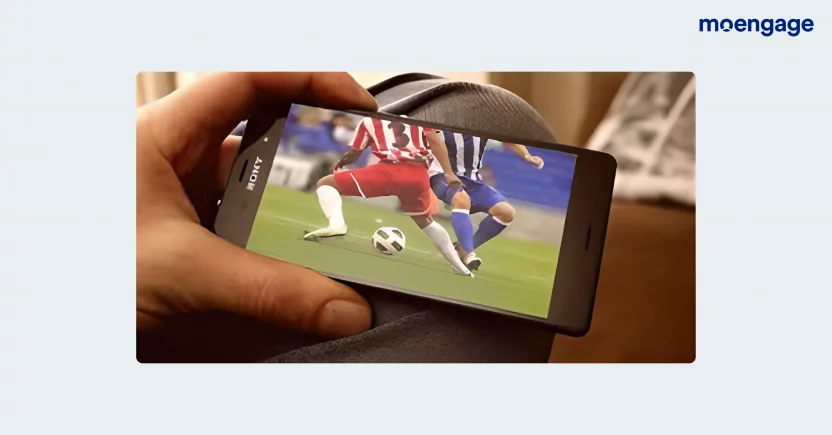
Sporting organizations have been running streaming apps on a subscription model and have managed to create a large customer base.
However, for this edition of the World Cup, brands went one step further. They provided free streaming of the matches, ensuring the reach beyond footfall fans.
As a result, apps with digital streaming rights witnessed a massive download surge before and during the event.
In India, Viacom18 had exclusive rights, and Jio Cinema App provided free digital live streaming. A week prior to the event (i.e., November 14th – 19th, 2022), the app saw a 100% increase in downloads and a 13% increase in the DAUs.
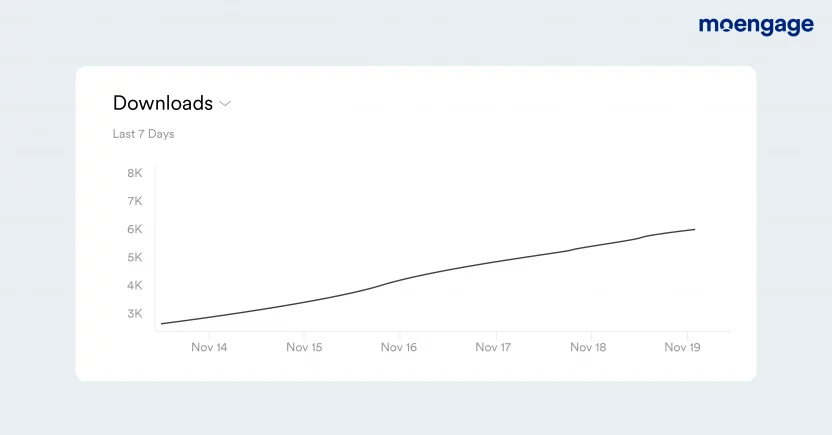
In the Middle East Region, beIN Sports received the broadcasting rights for the FIFA World Cup 2022 to telecast in Saudi Arabia, Oman, Qatar, Bahrain, Iran, Kuwait, UAE, Iraq, Turkey, and Yemen.
In the run-up to the start of the tournament, in just three days, the app witnessed a 90% surge in downloads, while DAUs and MAUs increased by ~5% and 2%
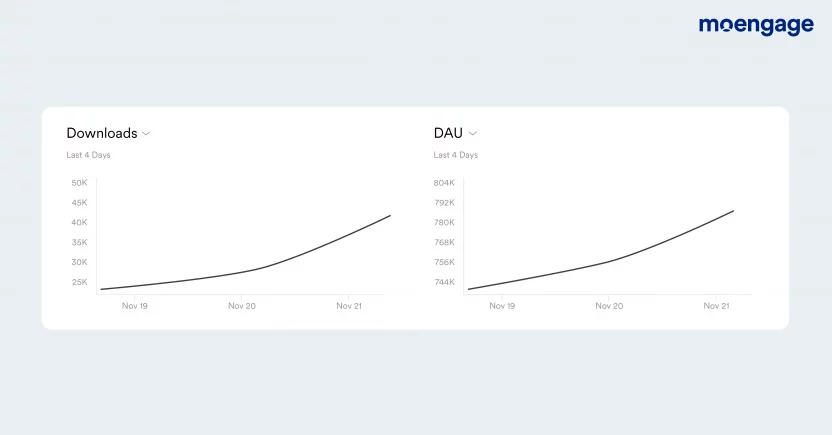
So What Can Brands Do In the Future?
There is sufficient evidence to prove that downloads and customer interaction increase during an event. So brands need to bank on them and create more engaging content like live commentary or insights into the game.
This way, apps can engage with customers at different touch points and also suggest new content based on previous interactions, thus keeping them interested post the event.
Fantasy Games to Create a Loyal, Engaged Community
In the recent article by MoEngage, 5 Ways Brands Can Win at the FIFA World Cup, one of the strategies highlighted was leveraging fantasy football to increase customer base.
FIFA+, the official app of the FIFA World Cup, amongst many other things, offered its users an option to create their fantasy team and compete with the rest of the world.
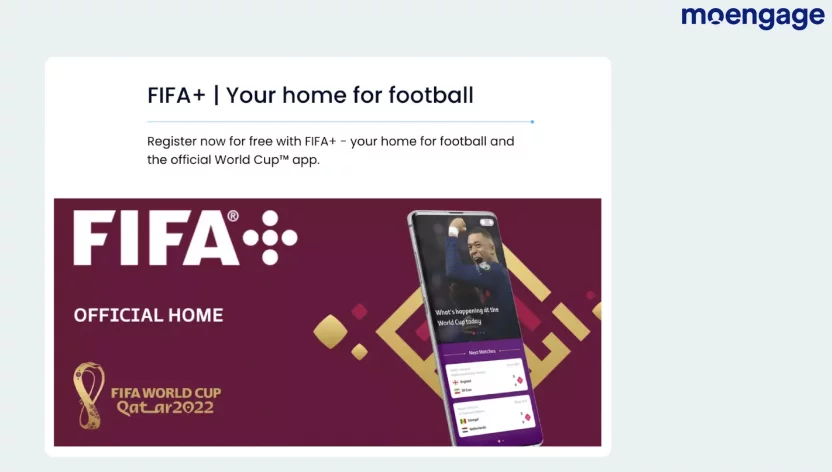
As a result, between November 19th and 30th, 2022, FIFA+ saw a 410% increase in app downloads. In terms of DAUs and MAUs, the app saw an upsurge of 250% and 150%, respectively.
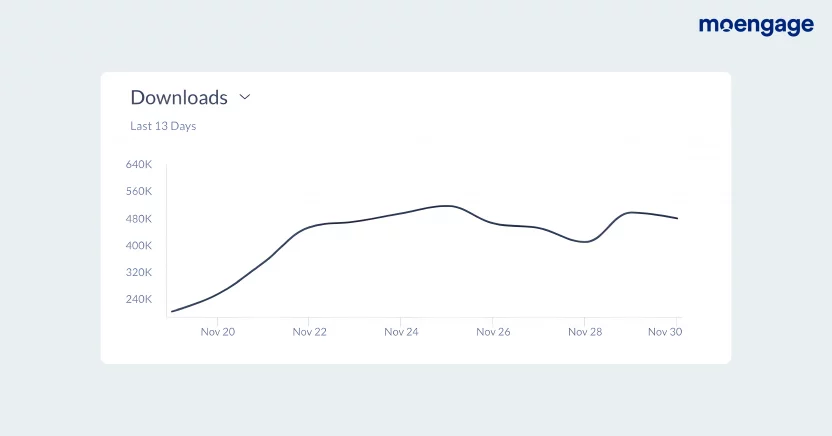
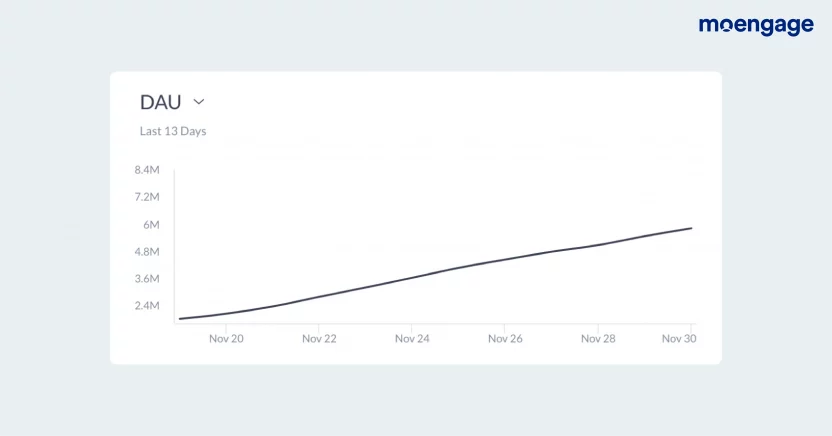
Moreover, in terms of countries – Brazil, the United States, the United Kingdom, India, and Saudi Arabia had the most downloads.
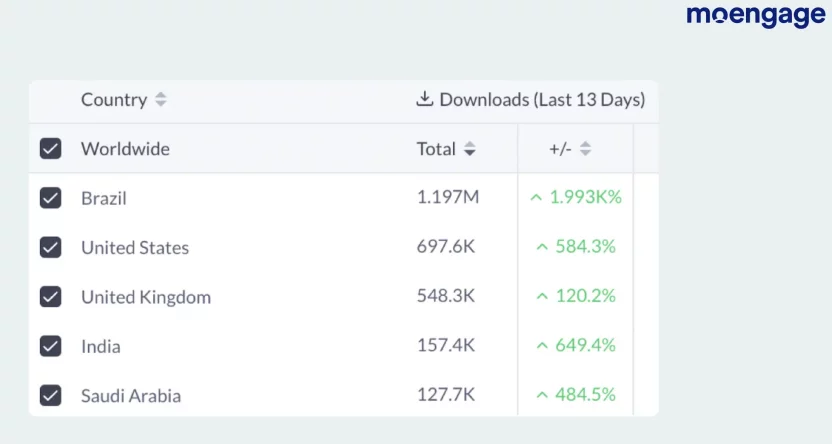
How FIFA+ app redefined customer experience with Stadium ExperienceTo drive engagement with fans visiting Qatar for the World Cup, FIFA+ app launched a Stadium Experience campaign. The ground-breaking campaign allowed fans in the stadium to experience the action like never before. Using a live augmented reality overlay of stats, heatmaps, insights, different camera angles, and VAR replays as on TV, the app provided an all-new viewing experience filled with insights.
|
So What Can Brands Do In the Future?
Apart from football, fantasy sports can be extended to other events like basketball, cricket, hockey, NFL, and other sports. Syncing up with these live events is a great way to enhance the app’s usage.
By introducing fantasy sports, brands can also gamify their app by introducing daily challenges, predictions, etc., and induce FOMO amongst ‘dormant customers’.
Incentivized Quizzes/Predictions to Drive Engagement
Even before the event starts, fans and pundits have their favorites predicted. That’s not all – even before every match/game, millions of viewers predict the result – some officially and some unofficially!
Consumer brands can harp on this trend and incentivize these predictions to engage with customers.
Crypto.com followed along the same lines and launched a campaign – Predict the FIFA World Cup winner for a chance to win CRO! – between 12th December and 13th December.
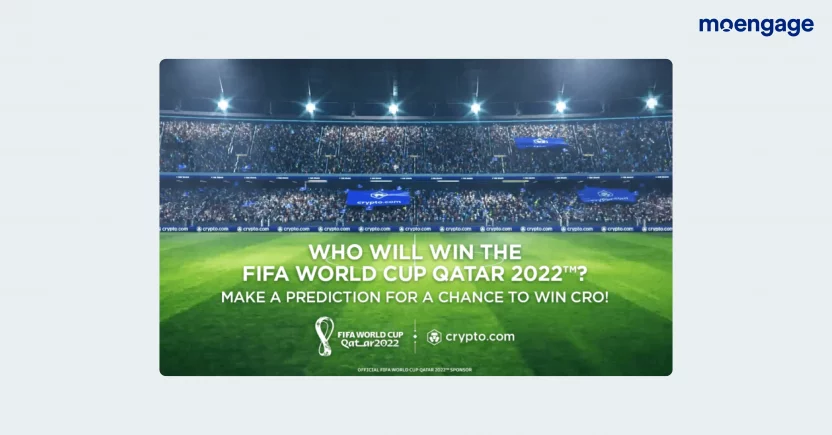
The brand used social media channels (Twitter, Instagram) to engage with customers and drive app downloads.
As a result of this campaign, between 6th December and 10th December 2023, Crypto.com app downloads increased by 2.6%, totaling more than 63.7K downloads.
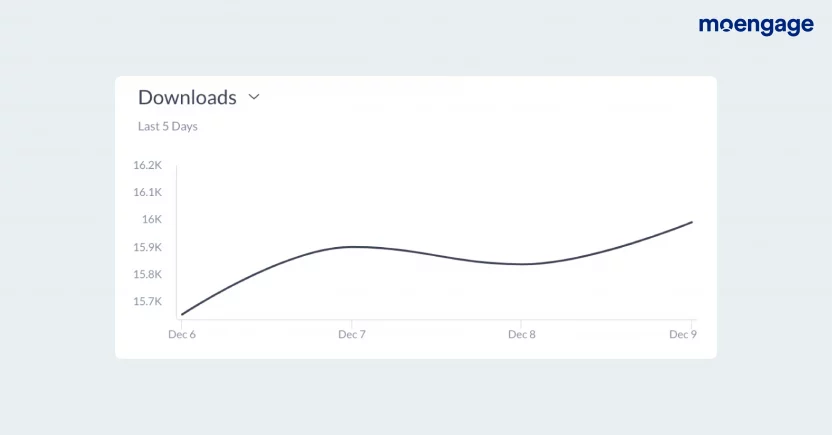
Belgium-based internet service provider VOO leveraged the same enthusiasm of football fans by creating a calendar throughout the world cup. Each day, a new contest was revealed – a game, a poll, or an interactive campaign.
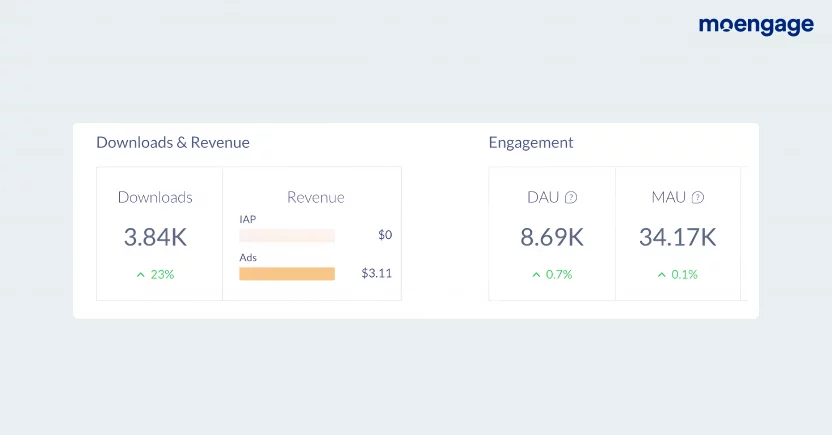
This way, the brand could efficiently engage its community and encourage customers to return to VOO’s digital channels.
So What Can Brands Do In the Future?
Consumer brands can capitalize on the giveaways model to create engagement beyond mega-events. Periodically launching campaigns with giveaways can lead to better engagement metrics throughout.
An add-on to this can be creating a referral loop that will further encourage existing customers to invite friends and family, in turn boosting primary KPIs.
Overall, brands that are witnessing a declining trend in terms of engagement can leverage these events to enhance their metrics and further nurture the customer base.
Using Social Media to Enhance Soft Engagement
It is well-established that brands cannot ignore the role of social media in branding and marketing. And this notion becomes even more critical when brands try to make a place during events like FIFA World Cup.
One example of this is Frito-lays leveraging Youtube to create a World Cup campaign around the much-debated question – “Is it called Soccer or Football.”
The ad featured prominent sporting personalities debating about the terminology. The innovative ad received many positive comments and garnered a viewership of over 700K.
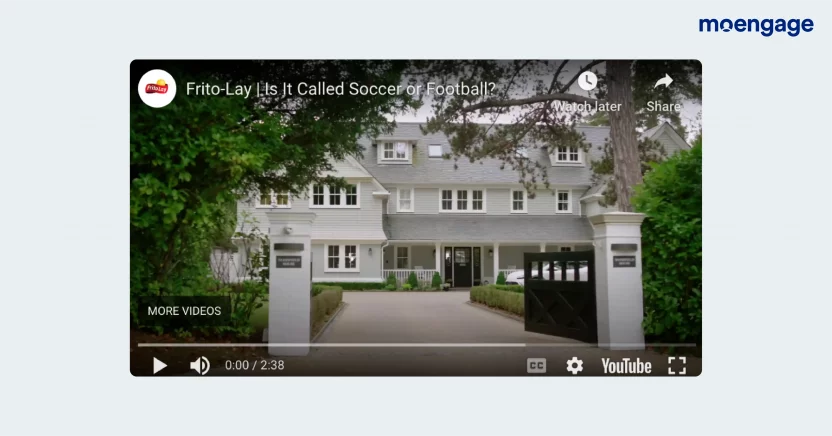
So What Can Brands Do In the Future?
Today, all consumer brands leverage the power of social media to drive branding. However, there are only so many campaigns that stand out.
Creating a campaign that leverages the power of participation marketing and allows customers to interact can be one of the many innovative ideas brands can adapt and stay ahead of the pack with their social media game.
Digital Advertising Can Create a Better Brand Recall
For the latest edition of the World Cup, more than 50 brands partnered with Jio Cinema and Viacom 18 to access real estate on the OTT platform.
As a result, the participating sponsor brands witnessed an increase in awareness, recall, and customer base.
According to a marketing agency, events like FIFA World Cup 2022 are value for money for brands collaborating with the digital platform JioCinema, giving brands a recall value in the range of 2X to 3X.
To Conclude:
For a marketer, mega events like World Cup or holiday shopping festivals are opportunities that come time and again. While it is great that brands stand out in one particular event, it is equally essential for them to carry forward that momentum into the next event (for example: From Football World Cup to Cricket World Cup or From Football World Cup to Ramadan Shopping Festival).
This can be done by drawing connected points through data derivation and analyzing each customer’s behavior. It’s critical to remain relevant in terms of time, frequency, channel, and occasion.
Podcast Series: Engaging Customers Beyond an Event/Occasion.
To retain these customers and enter their habit loop, brands can leverage certain attributes offered by a customer engagement platform (CEP) and become “the brand of the tournament” on every occasion.
Segmentation
- Use segments to understand how customers interacted with you during the last event. You can create custom segments like customers who participated every day vs. customers active only on a particular team’s game. A double click can then be done using advanced segmentation to identify each customer’s channel and time preferences.
Personalization
- Post understanding the various customer groups or cohorts, you can develop curated messages targeted across the preferred channel at a preferred time. Moreover, with the AI-enabled capabilities of an engagement platform like smart recommendations, you can predict customer behavior and accordingly send out communications.
Engagement
- A connected experience remains a key to sustainable engagement. For instance, if an NBA fan visits your physical store and buys Golden State Warriors merchandise. The next time the customer interacts with you online, you can leverage the previous information to show the customer curated content. As a result, the customer will witness a similar experience across channels, leading to customer delight.
Empathize
- Today, the world is undergoing an economic downturn. There are only a few occasions, like sporting events, where fans/consumers come together as a community to support a team or a player. Consumer brands that understand and build campaigns around such communities can achieve better metrics vs. simple promo discount offers. Additionally, this act can propel the brand’s loyal customer base.






